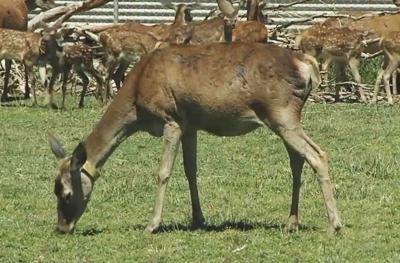The hinds chose the food according to energy and fat content. According to Ceacero, "food quality gets lower and lower the further away we move from the time in which the food is put out. In this way, the dominant hinds receive more energy in their diet whereas their subordinates do still get to eat enough but only the poor quality food that is left behind."
The same goes for cows and sheep
Although the discussion continues on the mechanisms that drive these animals to know how to select the best food that meets their requirements every time, the scientist ensures that "the preferential selection of certain foods and the total rejection of others is clear in both diet selection studies on wild animal populations and experiments in captivity."
The experiment combined behavioural study techniques (hierarchy and food access observation), ecological study techniques (diet component selection) and nutrition study techniques (nutritional value of each food item and the dietary intake itself).
The team of authors, which also included Tomás Landete-Castillejos and Andrés José García from the Research Institute of Hunting Resources, suggests that the results are also applicable to other social ruminants like cows, sheep and goats.

When food is abundant, it seems that animals do not have to compete but dominant deer hinds still uphold rivalry and select the most nutritious food to maintain their status. This is the case according to a study carried out on the Albacete experimental deer farm in Spain, which is the most important in Europe and the second in the world.
(Photo Credit: SINC)

The hinds chose the food according to energy and fat content.
(Photo Credit: SINC)
Source: FECYT - Spanish Foundation for Science and Technology